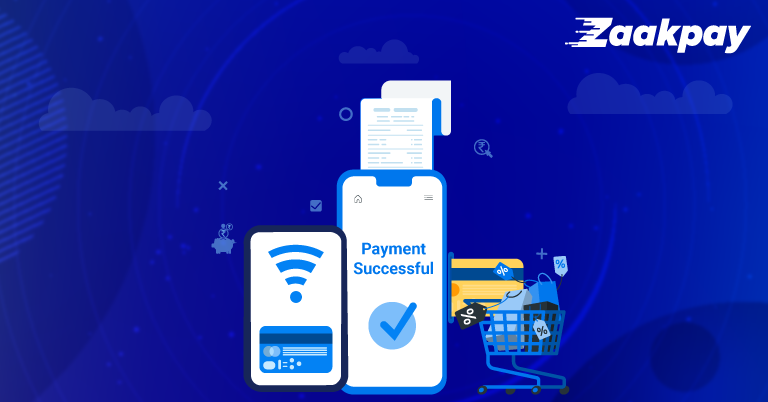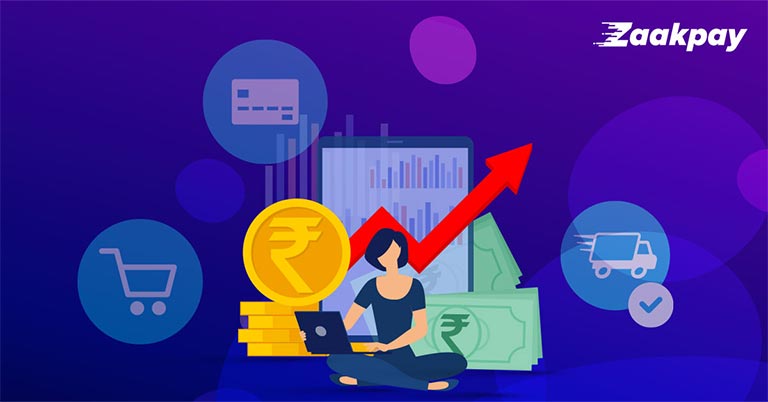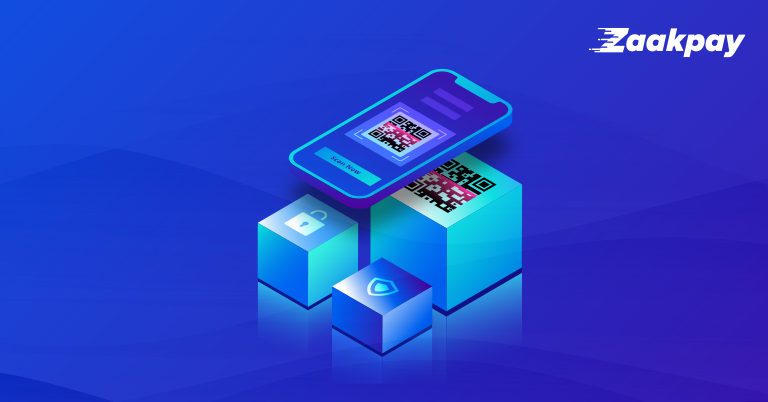Many merchants fail to recognize the importance of a streamlined checkout experience in retaining and converting customers. As a result, most of their customers don’t even make it to their payment gateway page. A haphazard payment process for customers who reach the checkout page can deter them from making the final tap. A haywire checkout page can be troubling for customers who may abandon the payment or not make recurring purchases.
How to Create a Perfect Checkout Experience for Your eCommerce Store
The market size of the eCommerce industry across India in 2020 was about $64 billion. As digitization is further spreading its arms into the remotest corners of the country, this market size is estimated to grow bigger.
eCommerce is meant to make shopping easier, convenient, and quick. A clunky and complicated checkout experience is the exact opposite of what an e-commerce experience is supposed to be.
eCommerce is also opening avenues for more businesses and increasing competition. In such a scenario, customers have several options for the same products or services. This creates a need for every business to provide the best possible checkout experience. Customers won’t think twice before shifting to another business if the checkout experience or the eCommerce payment gateway system doesn’t seem satisfactory.
Improve the Checkout Experience in 7 Simple Steps
Design an obvious CTA button
Nothing can be more frustrating than not understanding what to do next on a payment page. Many times, customers might get confused about where to click to go to the next page. At other times, they might just be confused if they should continue with the purchase. They might also get interrupted during the purchase process and completely forget about it later on. Having attractive call-to-action buttons catch the consumer’s attention and encourage them to proceed. It is a reminder for the customer to go to the eCommerce payment gateway to complete the payment.
Keep the registration process after the purchase
Most customers don’t prefer registering with a business until they have shopped from them a few times. Few customers would not want to register even then. The leading cause behind this can be security concerns or simply the burden of remembering yet another username and password. Forcing them to register mid-way through the payment process can lead to the abandonment of purchases. This can significantly bring down the sales. It is best to have an optional registration process after the customer is done making the eCommerce payment. The option to register using an existing Google or Facebook account can also work in favor of the business. Cart abandonment can be reduced by following this.
Make forms as simple as possible
The checkout form must be kept short and simple. It should be designed so that filling it doesn’t take more than 3-4 minutes. Only information that is relevant to the purchase should be asked from the customer.
For example, the receiver’s name, phone number, address, and other pertinent details are important. Other unnecessary fields will discourage the customer from purchasing simply due to security concerns. They might also get frustrated with a long-form. Breaking down more significant fields into smaller ones also makes the process easier. For instance, instead of having one field for address, it can be broken into House Number, Street, Locality, City, State, etc.
Make it mobile-friendly
The latest research shows that nearly 39% of online shoppers in India used smartphones for online purchases in 2018. The point to note here is that mobiles have much smaller screen sizes than laptops or desktops. A website designed for bigger screen sizes cannot be navigated conveniently on a mobile device. It has to be redesigned keeping in mind the screen size of a mobile phone. The fonts have to be readjusted so that they are visible. In many cases, website content might also have to be compressed to fit into the screen. Zaakpay is an example of a payment gateway system that supports all devices.
Remove the navigation
A navigation bar displays tabs to different sections of the website and other products. Generally, it also features a search bar. A good design principle is to remove the search bar in the checkout phase. It can be replaced with a progression bar during checkout.
The logic behind this move is to eliminate any distractions while the customer is checking out. When the customer is in the payment gateway for eCommerce website, their focus should be restricted. This would help in better conversions.
Offer multiple payment options as possible
Digital payments can be made through credit cards, debit cards, UPI, net banking, mobile wallet, Pay Later, and several other options. The preference of payment options would vary with customers. Most customers won’t even have access to all these options but keep the one they generally use. The business might lose a customer if their preferred mode is not supported. Choosing a payment gateway system like Zaakpay, which supports 100+ payment options, would streamline the process by letting customers pay by whatever means they want.
Make complementary product recommendations
One easy way to boost sales is to provide complementary product recommendations to the customers after the payment gateway page. If they have purchased a product, it means they need it. It also means that they most likely need similar products. Suggesting them such products right away can help in conversion. This is especially helpful if they have purchased a product that requires another product to complement it. For instance, suggestions of mouse-pads to a customer who purchases a mouse can lead to buying the suggested mouse-pad because a mouse needs a mouse-pad to function better.
The Takeaway
Finding the right payment gateway is not a challenge today with Zaakpay’s integrated payment gateway that provides end-to-end payment solutions for eCommerce businesses. Businesses can considerably scale up their sales by streamlining the payment gateway for eCommerce with Zaakpay. A coherent payment gateway can improve the overall eCommerce checkout experience for the customer. It provides a seamless experience across all platforms and payment options without any unnecessary registration or hassle.
Follow Us on:

